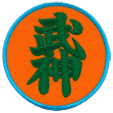What Is Budo Taijutsu
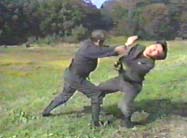
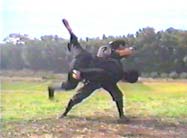
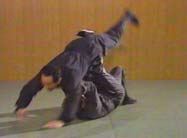
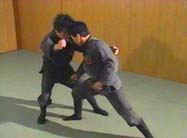
Bujinkan Budo Taijutsu is a traditional Japanese martial art that teaches effective ways of self-protection using timing, distancing, and angling. Multiple attacks, weaponry, striking, grappling, choking, leaping, rolling, and throws are all disciplines incorporated into the training of Bujinkan Budo Taijutsu. The training is non–competitive, allowing the student to focus on developing the mind and body through a whole–body movement martial art, not speed and/or muscle training.
The Bujinkan (translated as "warrior spirit hall") is the platform Masaaki Hatsumi, Soke (literally "head of the family", but commonly called "Grandmaster"), teaches Budo Taijutsu from. Hatsumi Sensei created the Bujinkan after his teacher, the late Takamatsu Sensei, died in 1972. Takamatsu Sensei was the Soke of nine ryu, or lineages, of which he taught to Hatsumi Sensei over the course of 15 years. The nine ryu are:
- Togakure Ryu Ninpo Taijutsu – Hidden Door School
- Gyokko Ryu Koshijutsu – Jewel Tiger School
- Kukishinden Happo Hikenjutsu – Nine Demon Gods School
- Koto Ryu Koppojutsu – Tiger Knocking Down School
- Shinden Fudo Ryu Dakentaijutsu – Immovable Heart School
- (Hon Tai) Takagi Yoshin Ryu Jutaijutsu – High Tree, Raised Heart School
- Gikan Ryu Koppojutsu – Truth, Loyalty & Justice School
- Gyokushin Ryu Ninjutsu – Jeweled Heart School
- Kumogakure Ryu Ninpo – Hiding in the Clouds School
It is the culmination of these nine ryu that Hatsumi Sensei uses as the basis for the Bujinkan. Three of the nine ryu are of ninjutsu decent (Togakure Ryu, Kumogakure Ryu & Gyokushin Ryu), making the history of the Bujinkan slightly more difficult to understand without proper historical interpretation by an authentic teacher.
The physical level of training in Bujinkan Budo Taijutsu includes:
- Junan Taiso
- Body flexibility and conditioning
- Dakentaijutsu
- Strikes, kicks and blocks
- Jutaijutsu
- Grappling, throwing and limb control
- Taihenjutsu
- Rolls, leaps and evasions
Students are also introduced to the application of traditional weapons in self-defense when they have demonstrated the appropriate level of self–control and coordination.
- Bojutsu
- long, medium and short stick and staff techniques
- Kenjutsu
- Sword techniques
- Tantojutsu
- Knife techniques
- Kusarijutsu
- Short chain techniques
- Naginatajutsu
- Halbard techniques
- Sojutsu
- Spear techniques
- Hojojutsu
- Cord and rope restraining methods
These weapons are replaced with wooden or rope replicas for safety.
Students are also taught to understand the principles of self-defense that together forms the very essence of weapon use. This enables Bujinkan practitioners to instantly adapt any object of any description as an aid in self-protection.
